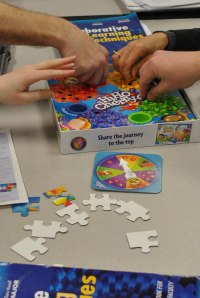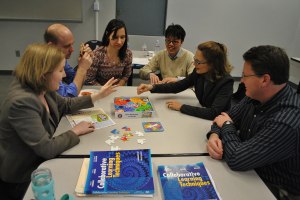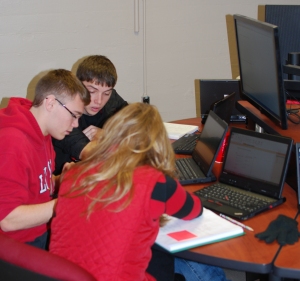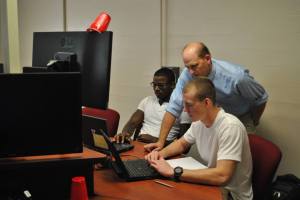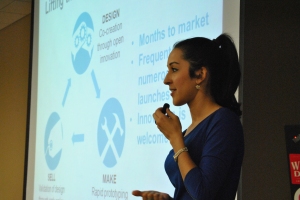
firstBuild representative Amelia Gandara, ChE ’14, presents to the ENGR100 class on the opportunities to use the technologies and equipment available at their on-campus facility.
First year students taking Introduction to Engineering (ENGR 100) were introduced to FirstBuild by Speed alumna, Amelia Gandara. FirstBuild (located on the north end of campus) is a partnership between GE Appliances and Local Motors whose mission is to create a new model for the appliance industry be engaging a community of industrial designers, scientists, engineers, makers and early adopters to address engineering challenges and new innovations. Students were encouraged to participate in the online community by generating ideas or to visit the microfactory to see how they could get involved in a “hand-on” fashion.

